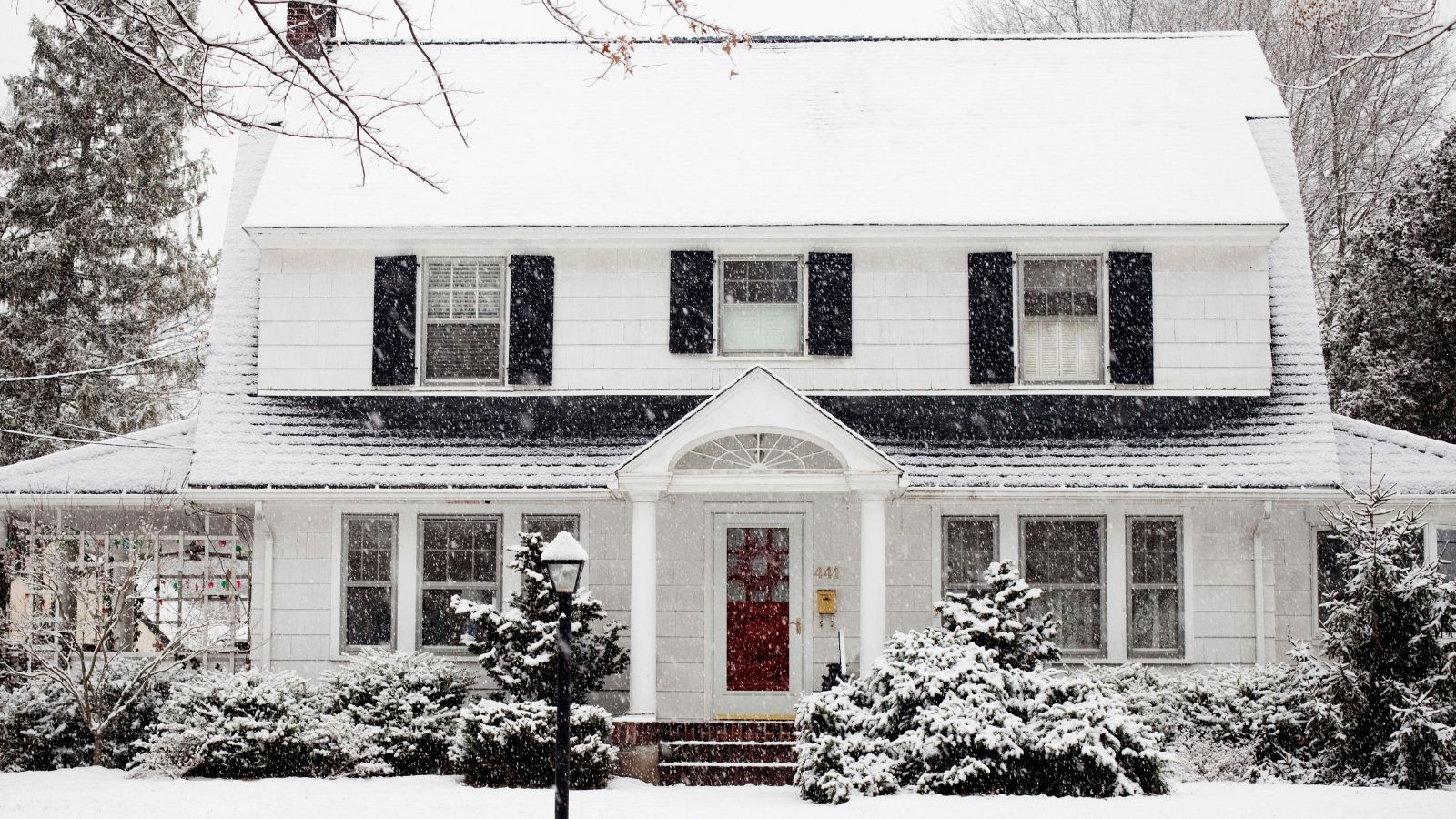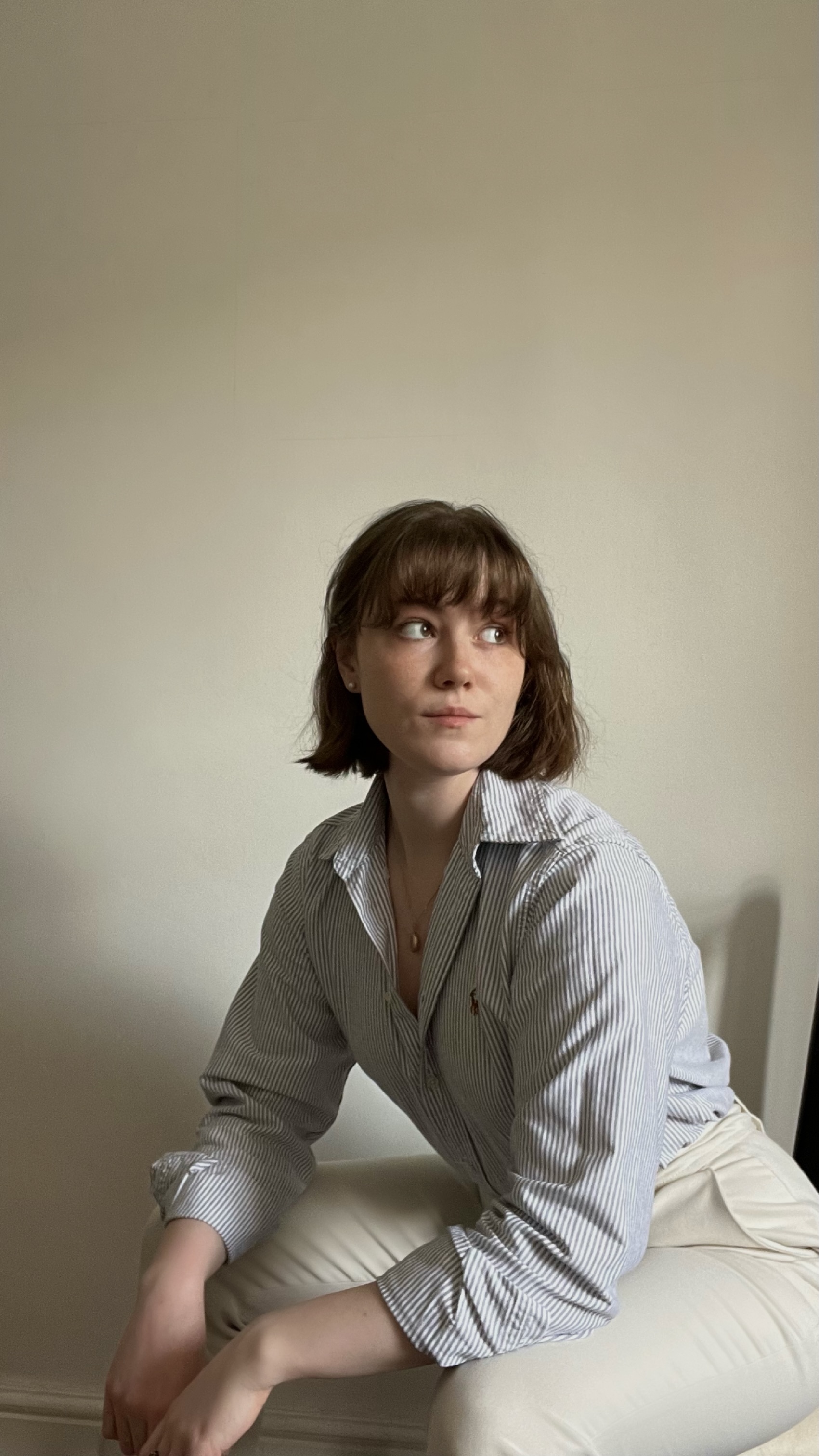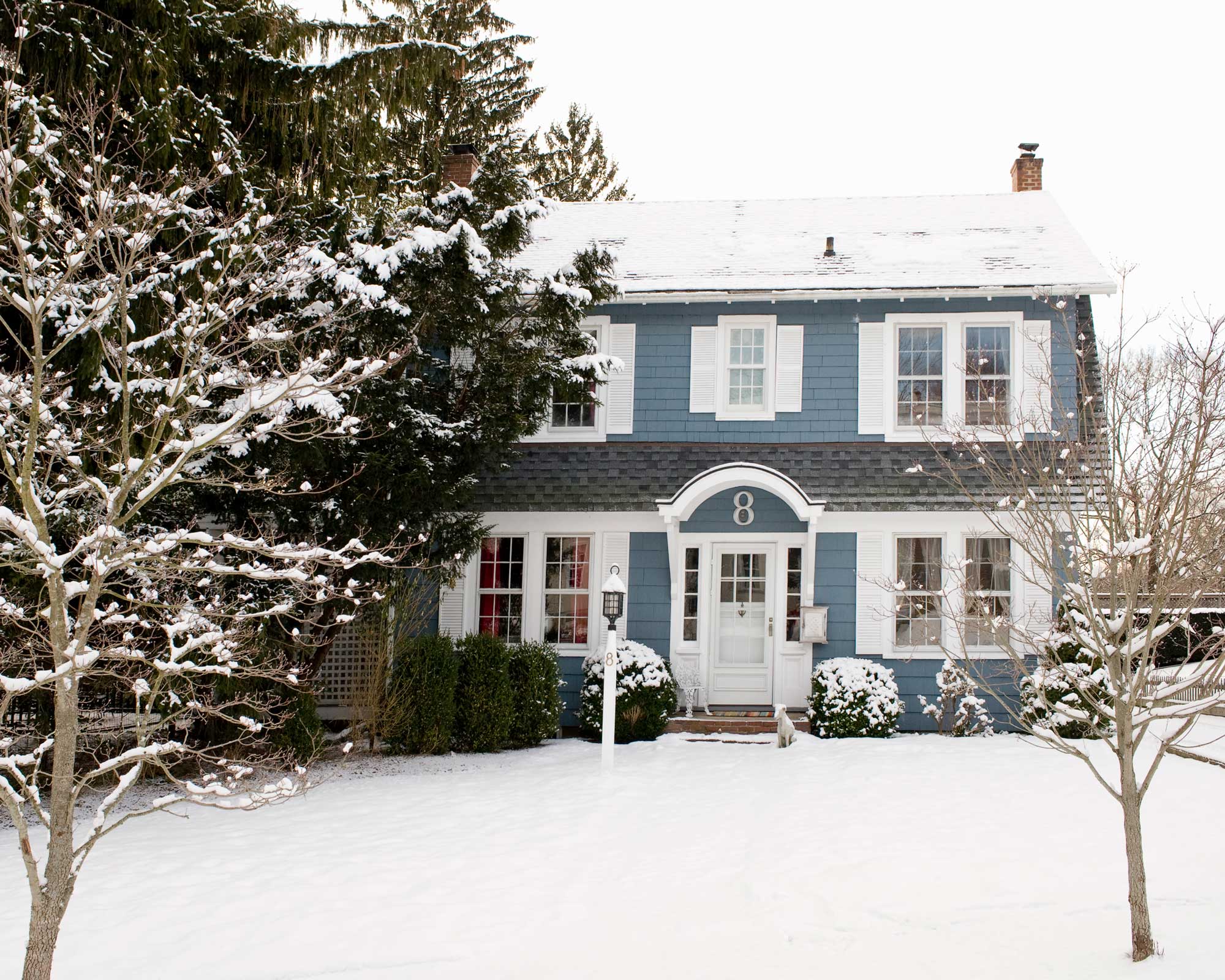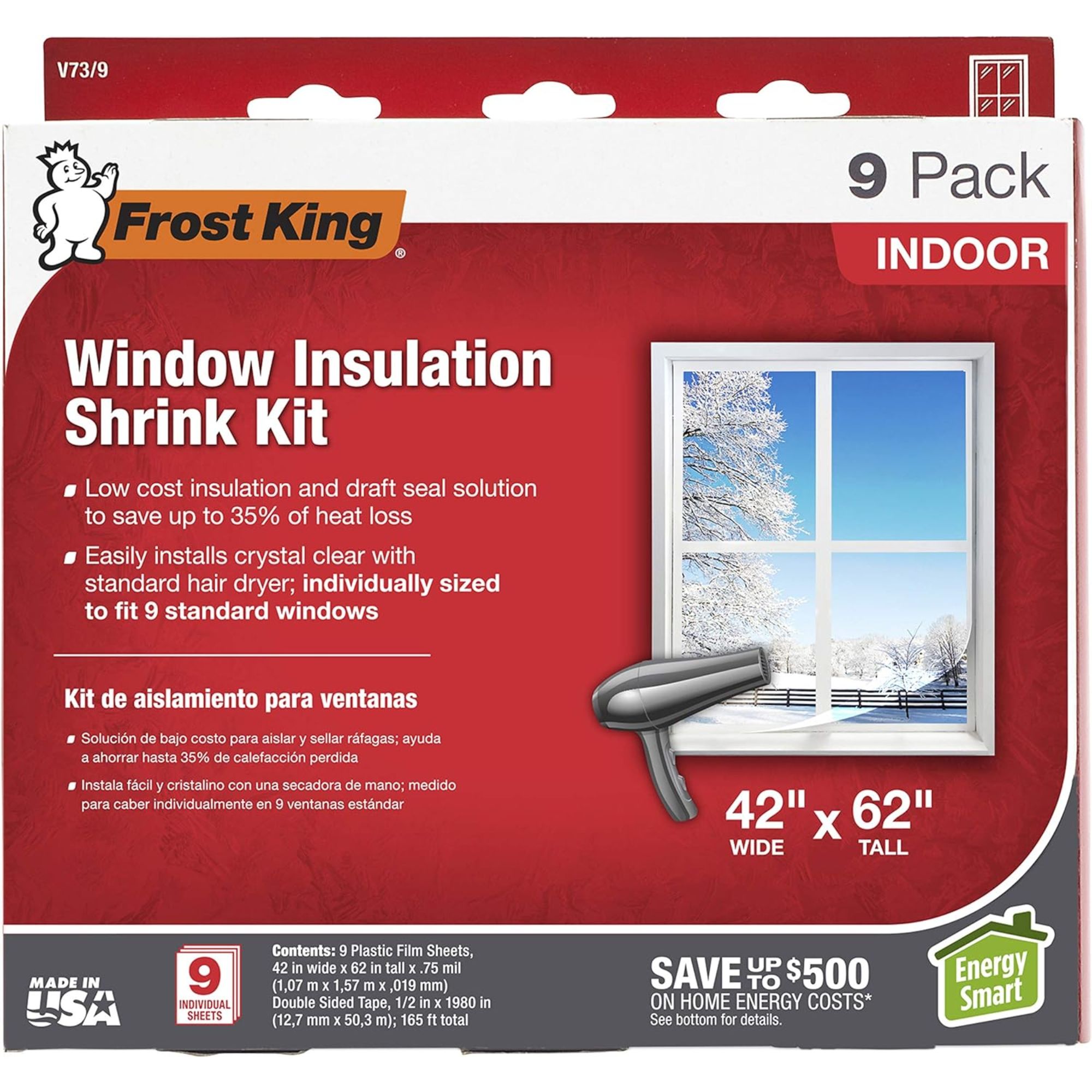Did you know snow is 'the single best diagnostic tool' for checking the performance of your attic insulation? Contractors reveal how to do it in less than 30 seconds
Their simple trick will help save you hundreds of dollars on heating


Snowy rooftops can look magical in winter but did you know this winter display also offers you valuable, instant insight into the state of your home’s attic insulation?
Top contractors have explained that snow and frost are the single best diagnostic tool for your home’s insulation, offering a visual rundown of exactly where you might be losing money, all from a single glance.
Here, they explain exactly how to tell if your attic insulation is doing its job based on the snow patterns on your roof, and what to do if your insulation isn’t performing as it should.
How snow can help you check your attic insulation
Checking the snow on your roof is a great maintenance task to help lower energy bills.
Michael Feazel, CEO of Roof Maxx explains, ‘An evenly distributed snow load that takes longer to melt is a good indicator that the insulation is doing its job and keeping heat inside the home.’
On the other hand, Constantine Anest, roofing contractor and owner of Ethos Roofing and Restoration says, ‘If you notice that snow on the roof is melting unevenly, this could be a sign of insulation problems. Why? Because when the snow melts faster in certain areas of the roof, it most likely indicates that heat is escaping through these spots, and the insulation is not performing its role.’
If no snow has settled on your roof, then it might be a sign that you do not have any insulation whatsoever, signaling that you need to improve your EPC rating to reduce energy bills.

Sydney Archer of Kiser Construction continues, ‘Another telltale sign that your attic insulation may need updating is an ice dam forming on your roof.'
These occur when warm air escapes your attic, melting snow and ice on the roof. The water then accumulates in your gutters and downspouts, but when temperatures drop, it freezes and forms a dam. 'This cycle of freezing and thawing can cause damage to gutters and eaves,' explains Sydney, 'allowing moisture to seep into your attic beneath the roof shingles and decking. This leads to interior water damage.’
This makes cleaning your gutters to prevent gutters from clogging and insulating your attic vital when preparing a house for cold weather. Neglecting to check for ice dams through the colder months is a home maintenance mistake to never make in winter.
Sydney urges you to double check your roof after snow or frost for a quick visual indicator of its performance, even if you are confident that all is well. He explains, ‘Blanket fiberglass insulation is the most common type of insulation, but this only has an average lifespan of 15 years. So, if your home was built more than 15 years ago and you have fiberglass insulation that has never been replaced, it’s probably time to upgrade.’
Learn the tell tale signs it's time to replace your insulation.

Insulating your attic is not the only way to keep your home warm in winter, even if it is a driving force behind cutting energy bills. Window film to stop air transfer can also have an impact on reducing heat loss.

Stopping drafts and cold air transfer is another way to keep your home a bit warmer, especially if you can't insulate an attic at the moment. This foam stripping adheres to the edge of doors and windows to create a tighter seal.

As a quick fix for larger air leaks, consider using an insulating foam that can be applied to gaps and will expand to fill holes perfectly, blocking out drafts instantly.
Rather than continue to struggle to keep a poorly insulated home warm, Michael Feazel suggests, ‘If you do notice any of these issues, the next steps should be to inspect the roof and look closely for gaps in insulation, damage or "compressed" material, and (fingers crossed not) moisture and mold.
‘It's very critical to keep a close eye on these problems as sealing air leaks and ensuring proper ventilation is important when preventing future issues and improving efficiency. In reality, you are probably best served engaging with a professional who will make sure the fixes are done correctly.’
Sydney Archer has a preference on attic insulation types. He says, ‘Spray foam does the best job of insulating an attic. When it’s applied properly by a professional, spray foam insulation can last a lifetime, so you never have to worry about replacing it. It will help prevent ice dams and save money at home, too!’
FAQs
What happens if you don’t remove snow from your roof?
In areas with only a light smattering of snow (a few inches), your roof is one of the many places you shouldn’t clear snow, as the dangers outweigh the benefits. However, if lots of heavy snow has settled on your roof, then it can apply pressure to the structure, possibly causing damage or, in extreme cases, collapse. This generally only applies to packed snow thicker than two feet, especially on flat roofs and smaller roofs such as those on porches and sunrooms. It is usually best to call the pros, who will have right equipment and specialist safety measures to tackle this safely for you.
Can you put too much insulation in an attic?
While it is good to have a well-insulated attic, there is such a thing as too much insulation. Too much padding, or the wrong type, can cause moisture to accumulate in your attic space, especially if it doesn't have vents, resulting in mold growth on your walls and insulation, and increasing the risk of damage to anything stored up there.
It is always best to hire a professional to install your insulation to ensure a good balance between warmth and adequate attic ventilation.
Knowing how and where to insulate your home to keep it warm all winter won't just save you money on energy bills. A warmer home can also keep you happier and healthier through the cold months, too, making it a worthy investment.
Sign up to the Homes & Gardens newsletter
Design expertise in your inbox – from inspiring decorating ideas and beautiful celebrity homes to practical gardening advice and shopping round-ups.

Chiana has been at Homes & Gardens for two years and is our resident 'queen' of non-toxic living. She spends most of her time producing content for the Solved section of the website, helping readers get the most out of their homes through clever decluttering, cleaning, and tidying tips. She was named one of Fixr's top home improvement journalists in 2024.
-
 Gardeners with Japanese maples urged to use this simple 2-ingredient solution that will stop pests fast if you act now
Gardeners with Japanese maples urged to use this simple 2-ingredient solution that will stop pests fast if you act nowHow to quickly clear honeydew and aphids from your Japanese maples
-
 The 5 biggest design mistakes I have made in the last 20 years of decorating and renovating – and what I have learned from them
The 5 biggest design mistakes I have made in the last 20 years of decorating and renovating – and what I have learned from themLife is all just trial and error, or at least, the way I've been decorating has been
-
 Can you paint a metal roof? Experts warn this could make or break your ‘worthy’ DIY efforts
Can you paint a metal roof? Experts warn this could make or break your ‘worthy’ DIY effortsDone right, it'll improve energy efficiency and avoid corrosion
-
 Professional cleaners reveal whether natural cleaners can disinfect common household bacteria and viruses
Professional cleaners reveal whether natural cleaners can disinfect common household bacteria and virusesThe answer may surprise you
-
 'They are not designed to be storage' – experts warn you should never store these 5 things on your washer or dryer
'They are not designed to be storage' – experts warn you should never store these 5 things on your washer or dryerYou'll run the risk of fire or damage to your appliance
-
 This $5 hack can cut your water bill in half and vastly improve your water pressure – it's perfect for renters and homeowners alike
This $5 hack can cut your water bill in half and vastly improve your water pressure – it's perfect for renters and homeowners alikeA faucet aerator can improve flow, reduce water, and help with washing up
-
 What are gutter guards, and do they really work? Roofing experts reveal these mean 'less to worry about', including mold and pests
What are gutter guards, and do they really work? Roofing experts reveal these mean 'less to worry about', including mold and pestsThey also help prevent water-related damage
-
 5 surprisingly practical ways to re-purpose old bed sheets for cleaning, decluttering and storage at home
5 surprisingly practical ways to re-purpose old bed sheets for cleaning, decluttering and storage at homeDon't ditch worn-out bedding – there's life in them yet
-
 Do you need to turn the lights off when you leave a room? Experts have ended this time-honored debate once and for all
Do you need to turn the lights off when you leave a room? Experts have ended this time-honored debate once and for allOn or off? We delve into the details of this age-old dispute
-
 I tried the baking soda trick to quickly and naturally clean my outdoor rug – it’s now set for Easter outdoor hosting
I tried the baking soda trick to quickly and naturally clean my outdoor rug – it’s now set for Easter outdoor hostingBaking soda is perfect for lifting dirt and debris